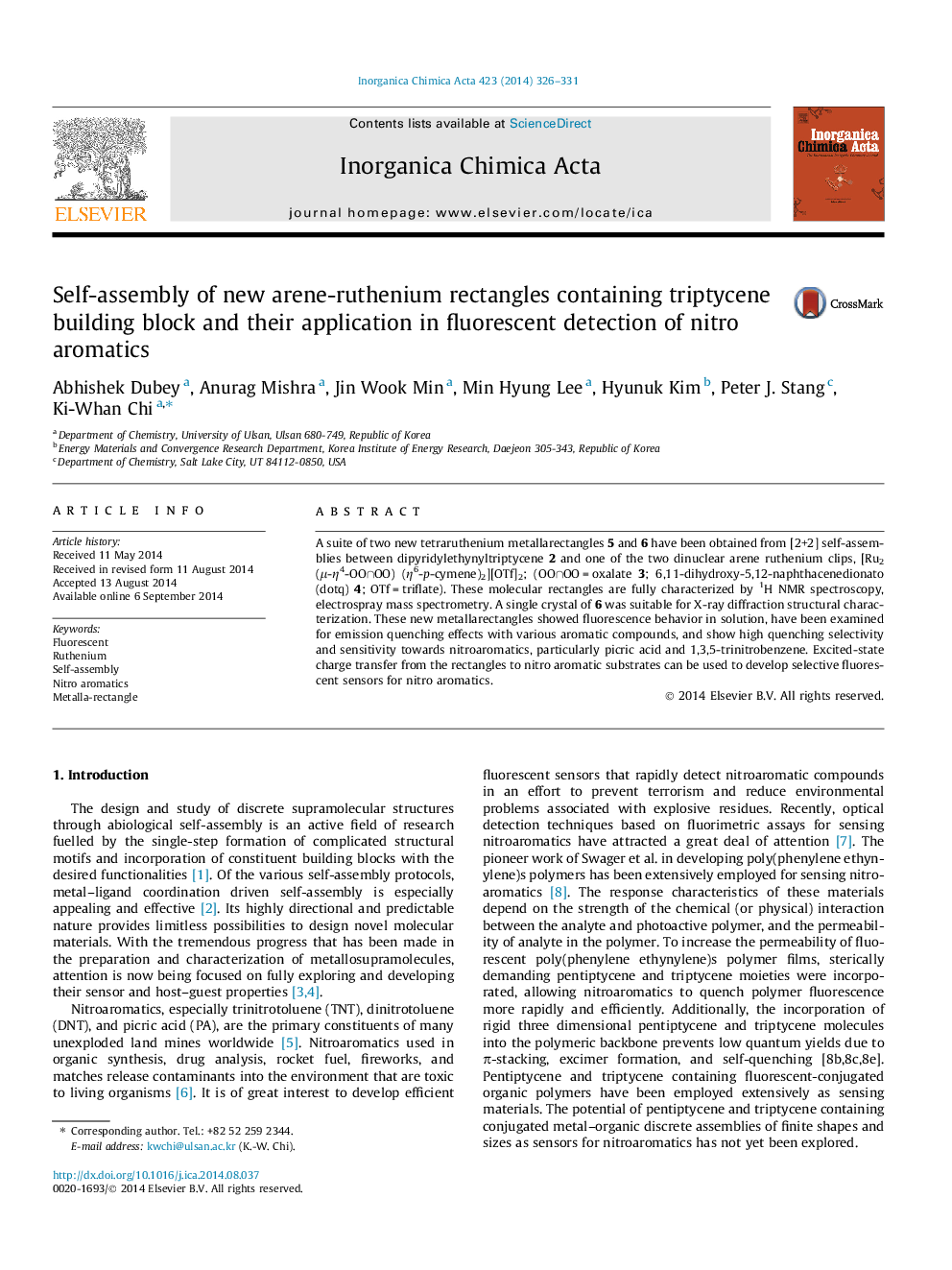| Article ID | Journal | Published Year | Pages | File Type |
|---|---|---|---|---|
| 1309475 | Inorganica Chimica Acta | 2014 | 6 Pages |
•Triptycene and ethynyl functionalities containing new ligand has been synthesized.•Fluorescent and π-electron rich metallarectangles 5 and 6 were synthesized.•Presence of triptycene prevents self-quenching by avoiding intermolecular stacking.•Metallarectangles 5 and 6 show high emission quenching selectivity for nitroaromatics.
A suite of two new tetraruthenium metallarectangles 5 and 6 have been obtained from [2+2] self-assemblies between dipyridylethynyltriptycene 2 and one of the two dinuclear arene ruthenium clips, [Ru2 (μ-η4-OO∩OO) (η6-p-cymene)2][OTf]2; (OO∩OO = oxalate 3; 6,11-dihydroxy-5,12-naphthacenedionato (dotq) 4; OTf = triflate). These molecular rectangles are fully characterized by 1H NMR spectroscopy, electrospray mass spectrometry. A single crystal of 6 was suitable for X-ray diffraction structural characterization. These new metallarectangles showed fluorescence behavior in solution, have been examined for emission quenching effects with various aromatic compounds, and show high quenching selectivity and sensitivity towards nitroaromatics, particularly picric acid and 1,3,5-trinitrobenzene. Excited-state charge transfer from the rectangles to nitro aromatic substrates can be used to develop selective fluorescent sensors for nitro aromatics.
Graphical abstractFluorescent metalla-rectangles are prepared by coordination-driven self-assembly of organometallic Ru-acceptor with new dipyridylethynyl-triptycene organic ligand. These metalla-rectangles undergo efficient fluorescence quenching by nitroaromatics.Figure optionsDownload full-size imageDownload as PowerPoint slide
